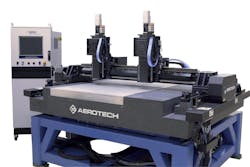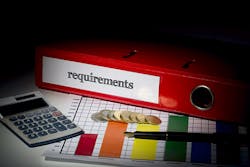Essentials of Motion Control Design — in Five Simple Steps
This file type includes high resolution graphics and schematics when applicable.
Here, we give you five simple steps to avoid common errors when evaluating motion-control requirements. This list doesn’t cover every possible scenario or error, but it’s a starting point. (If you’re not an expert, we highly suggest you employ a knowledgeable vendor, especially for expensive and complicated systems.)
Rather than doing a blind search for a solution that may or may not apply to your process, let’s start with the basics. There are three elements to a basic motion-control system. These are:
• The things that actually move, including stages, actuators, platforms, and slides
• Electronics, including drives or amplifiers that accept a user command and convert it to a motion — for example, to convert a command to move one millimeter into a signal for the machine
• The “brains” of the machine, or the actual motion controller.
You are now on your way to a basic understanding of motion control. But novices may still harbor fears of wasting thousands of dollars on a system that’s either unsatisfactory or fails completely — and then endure humiliation or worse. To prevent such potential catastrophes, follow these five steps.
STEP ONE:
Make a list of process parameters that limit your design.
STEP TWO:
Create an error budget.
Fortunately, most processes aren’t so critical. In most machines, lower precision might simply mean the inability to move parts precisely enough to get tolerances that ensure fit with other parts. Either way, consider the cost of the alternative and the probability of it happening.
STEP THREE:
Consider how things change. Will the machine need to perform more tasks someday?
STEP FOUR:
Consider technical support.
STEP FIVE:
Be very careful about building machines from scratch.
This file type includes high resolution graphics and schematics when applicable.
About the Author
Sarah Neyer
Application Engineer
Sarah Neyer is an expert in motion control at Aerotech, Inc. As an Application Engineer she provides technical consultation and business intelligence to the organization and its customers. She has a Masters degree in mechanical engineering from Carnegie Mellon University and is a former U.S. Army Sergeant.






